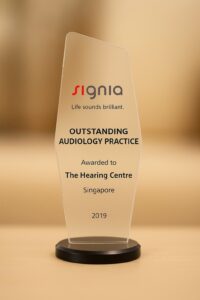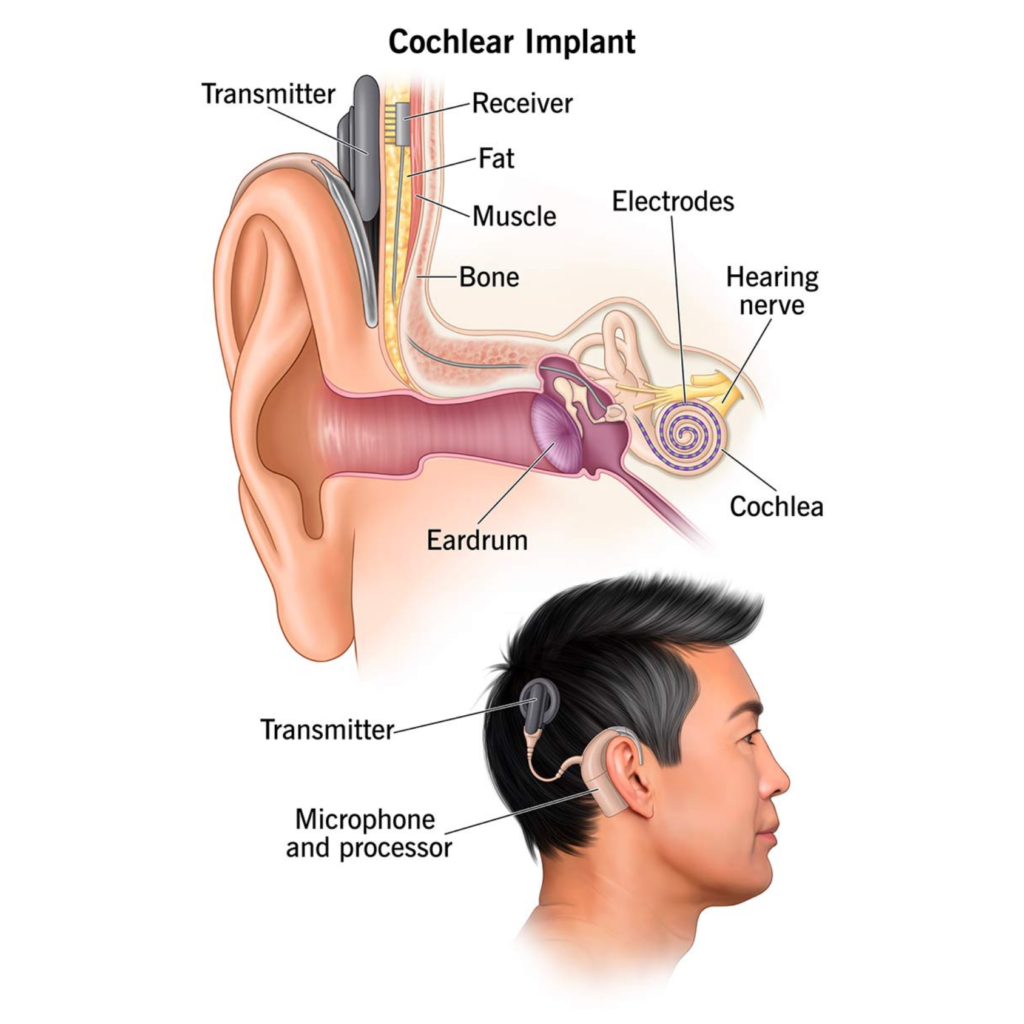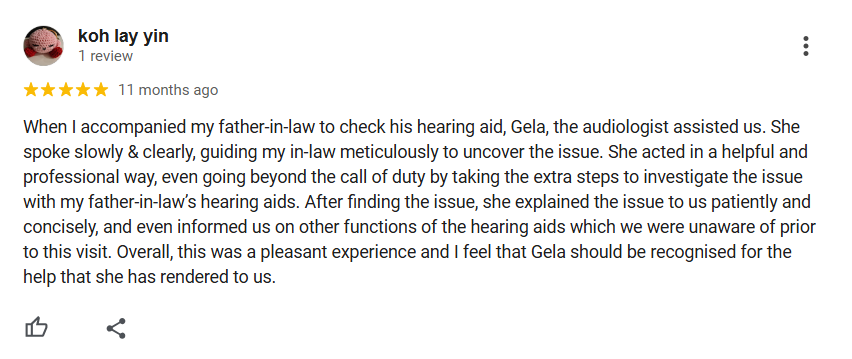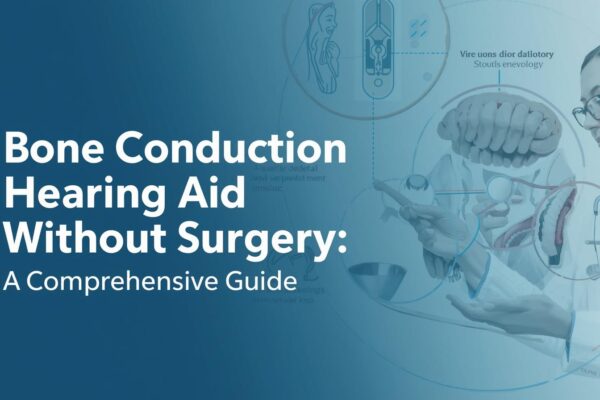Get a Cochlear Implant in Singapore for Enhanced Hearing
This unpleasant situation can be reversed with cochlear implants.
Unlike traditional hearing aids, this powerful implant is more potent and often benefits patients with profound to severe sensory hearing loss.
At The Hearing Center, we offer you a solution without the need for constant adjustments!
Our Awards and Recognitions
World Class Hearing Care Excellence





More
Understanding the Working Mechanism of Cochlear Implants
Cochlear implants are more advanced than regular hearing aids. You need a professional’s guidance throughout the cochlear transplant procedure.
- Sound Detection: Cochlear implant systems have two main parts – an internal electrode array and an external processor. The latter component remains outside of the ear (placed behind the ear) and helps the implant to pick up sounds and noises from the vicinity. It breaks the sound down into its acoustic components for a better understanding.
- Sound Preprocessing: The external speech processor takes the coded acoustic information to the transmitting coil. This coil is held in place by a magnet. Ultimately, the sounds are transformed into digital signals, all ready to be transmitted to the internal component.
- Signal Transmission: The information (which is now digitized) is transmitted wirelessly by the coil to the internal stimulator/receptor. This component has been surgically placed inside the ear.
- Signal Encoding: Now, the internal stimulator decodes the incoming digitized sounds and sends information regarding different frequency bands to each electrode situated within the cochlea. While high-frequency information is sent to the basal end of the cochlea, low-frequency information is sent to the apical end.
- Electrical Stimulation: This happens in the intra-cochlear electrodes that have taken the place of damaged cochlear structures. On receiving the digital signals, the auditory nerve fibers are stimulated right away.
- Signal Interpretation: Once the auditory nerves have picked up the signals from the electrodes, the information is relayed to the brain, where it gets interpreted as sounds. This lets individuals with damaged hair cells in the inner ear perceive sounds and clear hearing in the process.
- Adaptive Processing: Owing to this signal processing technique, the user can improve the audibility and intelligibility of sounds. Adaptive processing includes Adaptive dynamic range optimization (ADRO), Automatic sensitivity control (ASC), and Signal-to-noise-ratio noise reduction (SNR-NR).
- Long-Term Brain Adaptation: Cochlear implantation results in long-term adaptive changes to the brain. Termed as brain plasticity, the procedure involves the brain adjusting to the electrical input that comes from the implant.
Note: No cochlear implant can restore your normal hearing. However, it will enable you to hear sounds quite clearly and give you the chance to lead a happy life and engage in regular conversation with others.

The Procedure for Getting a Cochlear Implant
Step 1: Eligibility Assessment
Like any other examination conducted for testing hearing abilities, the initial step of getting a cochlear implant is to undergo a thorough assessment. Our team assesses your hearing condition and determines if you are eligible for a cochlear implant surgery Singapore for single-sided deafness. We cannot proceed without determining if you are an ideal candidate for this surgery.
Step 2: Getting Referred to Trusted Specialists
Once we know you are fit for the implant surgery, we refer you to trusted doctors in our network. We partner with expert otolaryngologists with years of experience in performing this surgery. We offer you the highest standard of care to improve your hearing abilities.
Step 3: Implant Procedure
The hearing specialist assesses your condition, and only then does he begin with the cochlear implant surgery. He carries out the procedure with utmost professionalism and sincerity to bring about a remarkable change in your hearing. Count on us to ensure comfort every step of the way, starting from surgery preparation to postoperative care.
Step 4: Device Activation and Programming
Once the surgery is done successfully, we step in to make the rest of the process easy for you. Our professionals activate and map the hearing device according to your needs so that your hearing potential reaches the maximum level. Owing to this meticulous yet customizable programming, the implant will serve its purpose just right.
Brands
Our Trusted Hearing Partners





Get In Touch
Make an Appointment
Reviews
Our Google Reviews







Popular Question
Trusted Answers for All Your Questions
Relearning how to hear using a cochlear implant takes some therapy and rehabilitation. Adults usually observe the effects 3 months from the first session.
The risks associated with getting the implant is same as that involved in any surgery. This includes risks of infection, injury to the facial nerve, vertigo, tinnitus, and numbness around the ear.
Yes, you can. Most cochlear implants are fairly durable and can be worn while playing sports. However, most are not waterproof and need to be taken off when swimming, diving, etc. Visit our cochlear implant clinic in Singapore for a solution right away.
While it is not mandatory, you may remove the sound processor or turn it off to save battery when sleeping.










